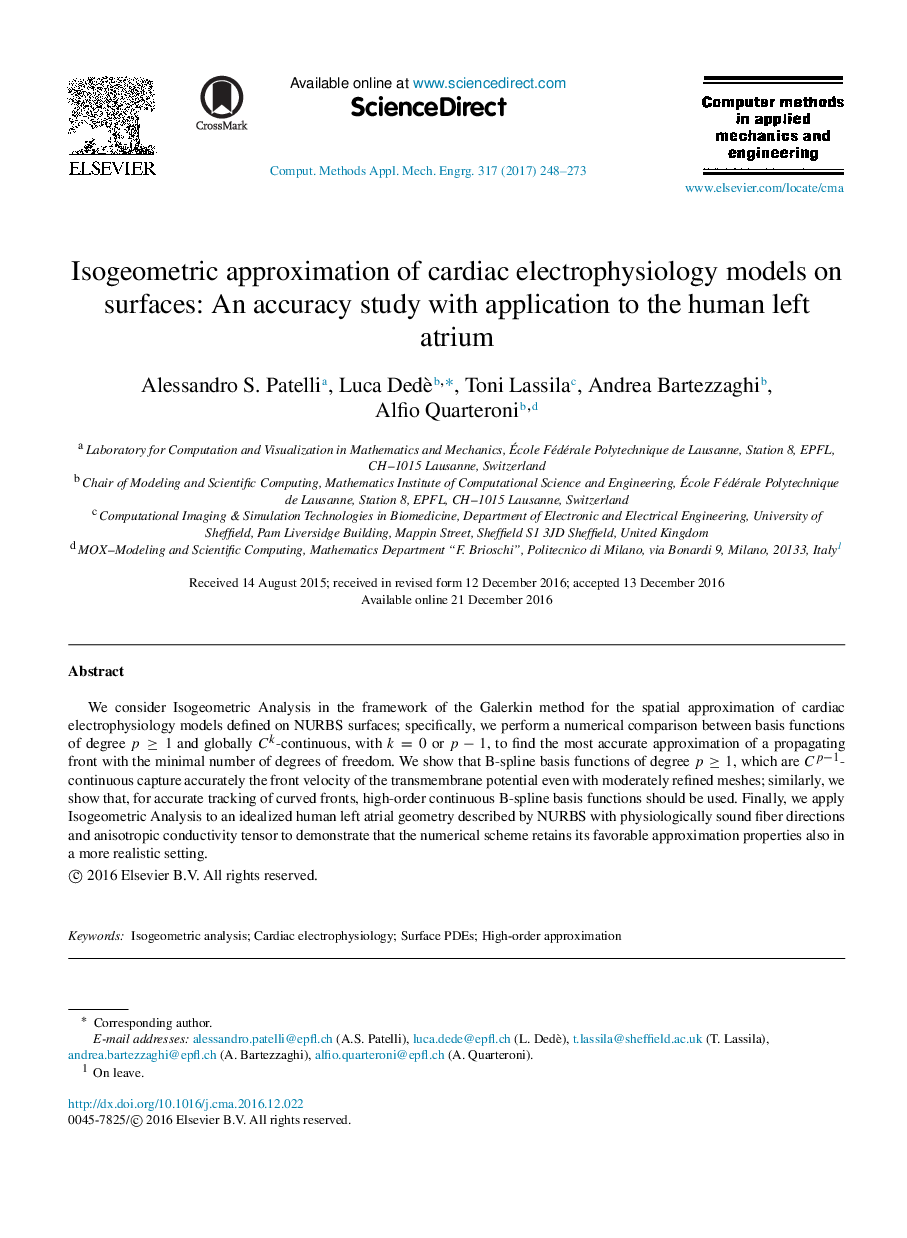| Article ID | Journal | Published Year | Pages | File Type |
|---|---|---|---|---|
| 4964106 | Computer Methods in Applied Mechanics and Engineering | 2017 | 26 Pages |
Abstract
We consider Isogeometric Analysis in the framework of the Galerkin method for the spatial approximation of cardiac electrophysiology models defined on NURBS surfaces; specifically, we perform a numerical comparison between basis functions of degree p=1 and globally Ck-continuous, with k=0 or p-1, to find the most accurate approximation of a propagating front with the minimal number of degrees of freedom. We show that B-spline basis functions of degree p=1, which are Cp-1-continuous capture accurately the front velocity of the transmembrane potential even with moderately refined meshes; similarly, we show that, for accurate tracking of curved fronts, high-order continuous B-spline basis functions should be used. Finally, we apply Isogeometric Analysis to an idealized human left atrial geometry described by NURBS with physiologically sound fiber directions and anisotropic conductivity tensor to demonstrate that the numerical scheme retains its favorable approximation properties also in a more realistic setting.
Related Topics
Physical Sciences and Engineering
Computer Science
Computer Science Applications
Authors
Alessandro S. Patelli, Luca Dedè, Toni Lassila, Andrea Bartezzaghi, Alfio Quarteroni,
